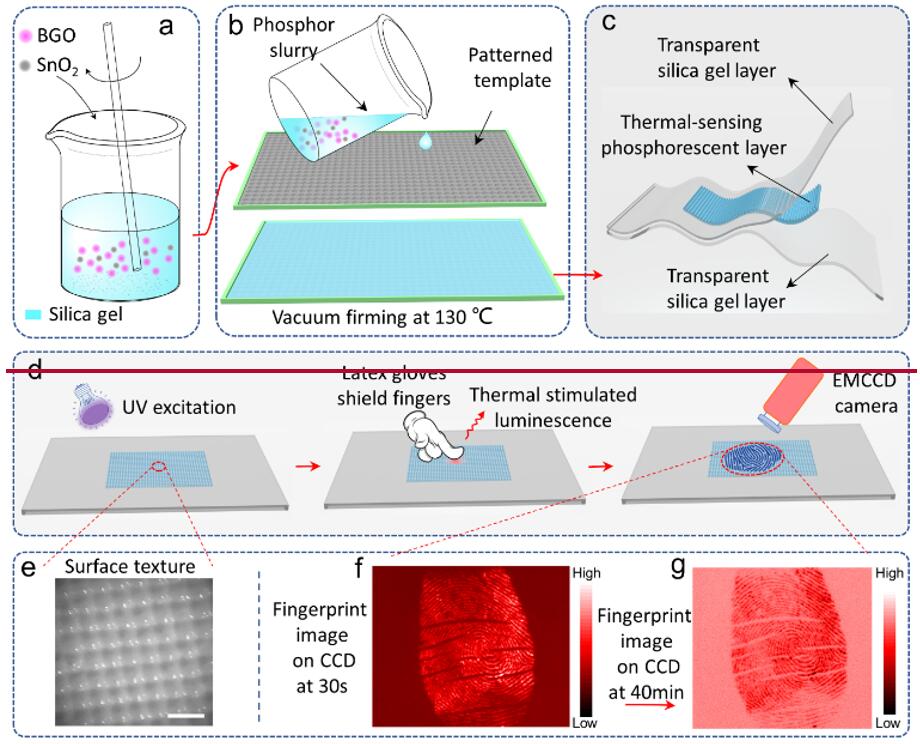Fingerprint detection is an important and effective identification technique widely applied in the criminal investigation, signature identification, and security verification.
However, the most studies are focus on the physical characteristics and heterogenous chemical components. Although the detection with these imaging strategies has many advantages, it still suffers from a main drawback. For example, all of them are based on sweat mingled chemicals and metabolites, need intrinsic (sweat, sebum) or extrinsic (dirt, grease) constituents.
Recently, a study “Flexible thermosensitive films based on shallow-trap persistent luminescence for high-resolution texture imaging of fingerprints even through latex gloves” published inJournal of Materials Chemistry C on August 14. The research group led by Prof. ZHANG Hongwu from the Institute of Urban Environment (IUE) of the Chinese Academy of Sciences (CAS) designed a novel thermosensitive technique based on shallow-trap persistent luminescence for high-resolution texture imaging of fingerprints even through latex gloves.
When a finger in latex gloves touches the thermosensitive persistent luminescence film's surface, the heat can be shortly transferred to the film through the latex glove, inducing the temperature rise of the covered area. Simultaneously, thermally stimulated luminescence (TSL) can be produced, and electrons in the shallow-trap will be consumed. In this way, the fingerprint information can be displayed and stored on the thermosensitive PersL luminescent film.
This work was supported by the National Natural Science Foundation of China and Key Program of International Cooperation of Fujian Province.

Preparation of a phosphor film and its application in fingerprint detection.